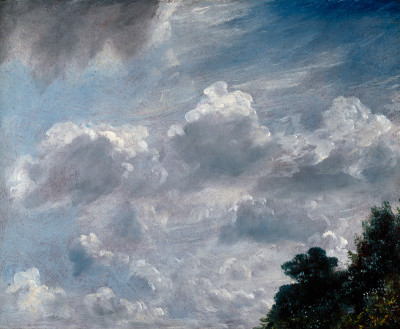RA Collections Decolonial Research Project
RA Collections Decolonial Research Project
By The RA Collections Team
Published 28 March 2022
Over the past year, our team has been investigating the links between the RA and its colonial past. In our first post on this subject, we offer an update on this work, and capture how we’re documenting associations between 18th- and 19th-century Royal Academicians and colonial activities
-
Initial Scope of the Project
As the first part of ongoing work into reassessing our history and Collections, the Collections team has been investigating links between early Academicians and colonial interests, including the ownership of enslaved people. Using online resources, primarily the Oxford Dictionary of National Biography and UCL’s Legacies of British Slavery database, this research has looked at Academicians from the foundation of the RA in 1768 until 1850. This period was chosen for initial investigation because ownership of enslaved persons was made illegal in 1834. This does not mean that links with and profits from enslavement did not continue beyond this date, but it formed a useful marker for the first phase of the research.
Everyone living in Georgian and Victorian Britain was implicated in enslavement and empire, whether actively or passively. Our survey has tried to ascertain whether Academicians were specifically involved with any of the following:
1) ownership of enslaved people or of plantations where enslaved people worked
2) beneficiaries of individuals who owned either of the above
3) colonial activities such as working as artists with the East India Company
4) travels or periods of residency in British colonies
5) debates over the abolition of slavery
6) connections with either known imperialists or abolitionists
7) had immediate family members who were implicated or involved with any of the above
First Findings
So far, many colonial connections to Academicians have been uncovered. This information has been collated in a spreadsheet, including brief details of the nature of each association. This spreadsheet will inform further areas for research and identifies artists whose biographies require greater in-depth investigation as part of the RA Collections Decolonial Research Project. Details on accessing the spreadsheet can be found at the end of this article.
The process of further researching specific artists’ connections with enslavement and colonialism is already underway and additional information will be added to artists’ biographies on the RA website as the work progresses. A selection of Academicians with extended biographies currently available online are John Singleton Copley, who is known to have owned enslaved people, Richard Cosway (with his wife Maria Hadfield), who employed a Black servant and was pro-abolition, and the RA’s first President Sir Joshua Reynolds, who also employed a Black servant who had probably been formerly enslaved.
-
More generally, investigation into this aspect of the RA history has revealed the breadth of ways in which artists were involved in the processes of empire. Several Royal Academicians, including Sir Joshua Reynolds, Sir Thomas Lawrence and Sir Henry Raeburn, were patronised by wealthy slave-owners. Raeburn, a Scottish artist whose paintings were beloved by the wealthy Edinburgh elite, was also a trustee of a will involving property in Jamaica linked to enslavement. Charles Catton, a founding Member of the Academy and coach-painter to George III, had a son who became an owner of enslaved persons.
Even the most celebrated Academicians who espoused anti-slavery views have connections that can be uncovered in the archive. J.M.W. Turner, whose painting Slavers throwing overboard the Dead and Dying – Typhon [sic] coming on (1840) is widely regarded as a prominent statement against the evils of the slave-trade, invested in a Jamaican farming enterprise whose profits relied on the work of enslaved people.
Academicians were also active in the campaign against slavery. Best known for his animal paintings, the artist James Ward was a staunch abolitionist whose painting Liboya Serpent Seizing its Prey (c. 1803) was an allegory for the slave-trade, underlining Ward’s vehement opposition. In a similar vein, Robert Smirke the Elder, a painter and illustrator who held democratic and anti-monarchist views, provided the illustrations for the volume Poems on the Abolition of the Slave Trade (1809) by James Montgomery, James Grahame and E. Benger.
-
-

Thomas Gainsborough RA painted a portrait of the musician and man of letters, Ignatius Sancho (c.1729-1779), a Black Briton who had formerly been enslaved. The portrait was subsequently engraved by Francesco Bartolozzi RA, an Italian-born artist whose prints were popular in Georgian Britain, and the engraving was included in the first edition of Letters of the Late Ignatius Sancho, an African (1782). This book was published shortly after Sancho’s death in 1779 by his friend and correspondent Frances, Lady Crewe, and aimed to gain support for the abolitionist movement.
Many early Academicians did not express a strong position either in favour or against enslavement – yet by virtue of living in 18th- and 19th-century Britain, they encountered forces on both sides of the debate. George Barret RA, a leading 18th-century landscapist, was patronised by both pro- and anti-slavery clients. Pennsylvanian-born Benjamin West, who became the second President of the RA, was brought up in a Quaker family – a community proactively opposed to enslavement – but himself married the daughter of a Philadelphia merchant, whose livelihood relied on colonial trading routes stemming from the Transatlantic Slave Trade.
These findings create a complex picture of British society during the early history of the Academy. Undertaking this project allows all who are interested to understand the history of the Royal Academy and its Academicians in an ever-increasing level of complexity and fullness.
-
-
Next steps
The work is ongoing. The expanded artist biographies, available on individual artist’s pages on the RA website, will be supplemented with new interpretation of objects in the Collection, building on documentation work already underway.
If you would like to view the complete spreadsheet of findings from our survey of Academicians 1768-c.1850, please email library@royalacademy.org.uk.






